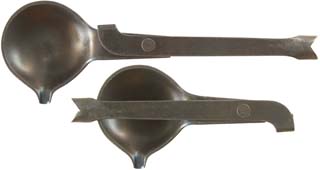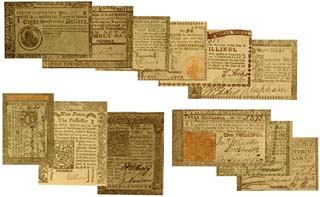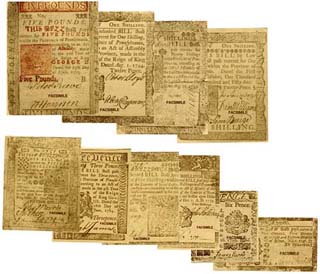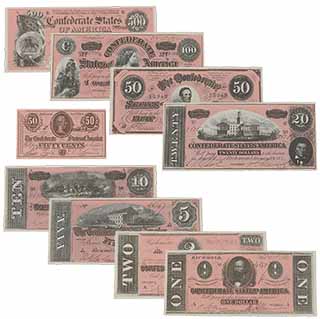Your search for '广东政府采购智慧云平台'
returned
5,639 results.

|
9 piece Powder Measure Set, 20-110 Grains, Brass, Made in the U.S.A.
This set includes a total of 9 of our most popular brass measures. Sizes include: 20, 30, 40, 50, 60, 75, 90, 100 and 110 grains. Made in the U.S.A. Originally called “finger chargers", these small brass tubes have a lanyard loop in the butt end, and may be shortened to the exact charge you desire, using a plumber's tubing cutter. Old timers some
|

|
English Medallion , 1" diameter, brass
Ideal for use as presentations, awards, and shooting match prize medals, these 1" diameter medallions are embossed with the British Royal Device (emblem), with a hole for your ribbon, lace, or a small loop of wire, leather, or tiny link of chain. Select bright brass (first place), bright nickel silver (second place), or polished copper (third place
|

|
English Medallion , 1" diameter, copper
Ideal for use as presentations, awards, and shooting match prize medals, these 1" diameter medallions are embossed with the British Royal Device (emblem), with a hole for your ribbon, lace, or a small loop of wire, leather, or tiny link of chain. Select bright brass (first place), bright nickel silver (second place), or polished copper (third place
|

|
English Medallion , 1" diameter, german silver
Ideal for use as presentations, awards, and shooting match prize medals, these 1" diameter medallions are embossed with the British Royal Device (emblem), with a hole for your ribbon, lace, or a small loop of wire, leather, or tiny link of chain. Select bright brass (first place), bright nickel silver (second place), or polished copper (third place
|

|
French Medallion , 1" diameter, brass
Ideal for use as presentations, awards, and shooting match prize medals, these 1" diameter medallions are embossed with the French Royal Device (emblem), with a hole for your ribbon, lace, or a small loop of wire, leather, or tiny link of chain. Select bright brass (first place), bright nickel silver (second place), or polished copper (third place)
|

|
French Medallion , 1" diameter, copper
Ideal for use as presentations, awards, and shooting match prize medals, these 1" diameter medallions are embossed with the French Royal Device (emblem), with a hole for your ribbon, lace, or a small loop of wire, leather, or tiny link of chain. Select bright brass (first place), bright nickel silver (second place), or polished copper (third place)
|

|
French Medallion , 1" diameter, nickel silver
Ideal for use as presentations, awards, and shooting match prize medals, these 1" diameter medallions are embossed with the French Royal Device (emblem), with a hole for your ribbon, lace, or a small loop of wire, leather, or tiny link of chain. Select bright brass (first place), bright nickel silver (second place), or polished copper (third place)
|

|
Folding Lead Ladle , hand forged, blued steel, folds to 5-1/4" length
This hand forged folding lead ladle was copied from an original 18th century ladle. When extended, this hand forged iron ladle, with a blued finish, is 7-1/2" length. It folds to 5-1/4" length. Perfect for storing in your shooting bag, or knapsack. The 2" diameter, 1/2" deep bowl has a curled lip for easy pouring. The handle has a forged socket, ap
|

|
13 Original State Facsimile Paper Money Set
For many years before the Revolutionary War, paper money or "Bills of Credit" had been circulating in the American Colonies. Most were issued to pay for military emergencies, or were authorized to build or repair public works. In many cases it also filled the void caused by shortages of coins. With the beginning of the American Revolution, each Sta
|

|
Paper Money Set by Benjamin Franklin , reproduction of 10 bills from 1739 to 1764
The story of paper money in America is linked irrevocably to Benjamin Franklin. His first experience printing money came in 1728 while working for Samual Keimer. The following year at age 23 he authored a booklet called " A Modest Inquiry into the Nature and Necessity of a Paper Currency". Franklin's first independent printing job for paper money w
|

|
Confederate States Paper Money Set , reproduction of 9 bills from Feb. 17, 1864
Confederate currency played an important part in purchasing the material with which to wage war. Not having many coins, the Southern government turned to paper money. The First Issue was authorized by the Act of March 9, 1861, and some of those notes were actually printed in the North by the National Bank Note Company of New York. Through the next
|